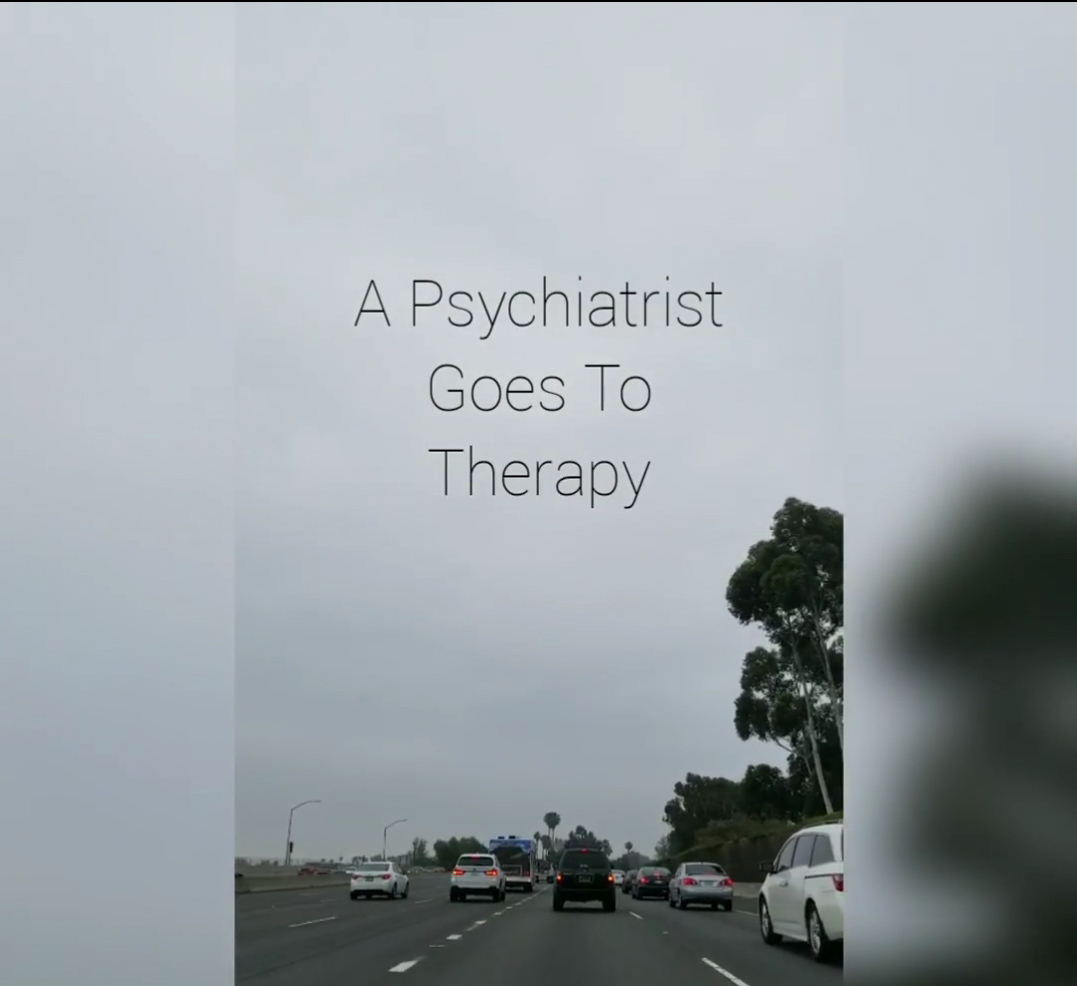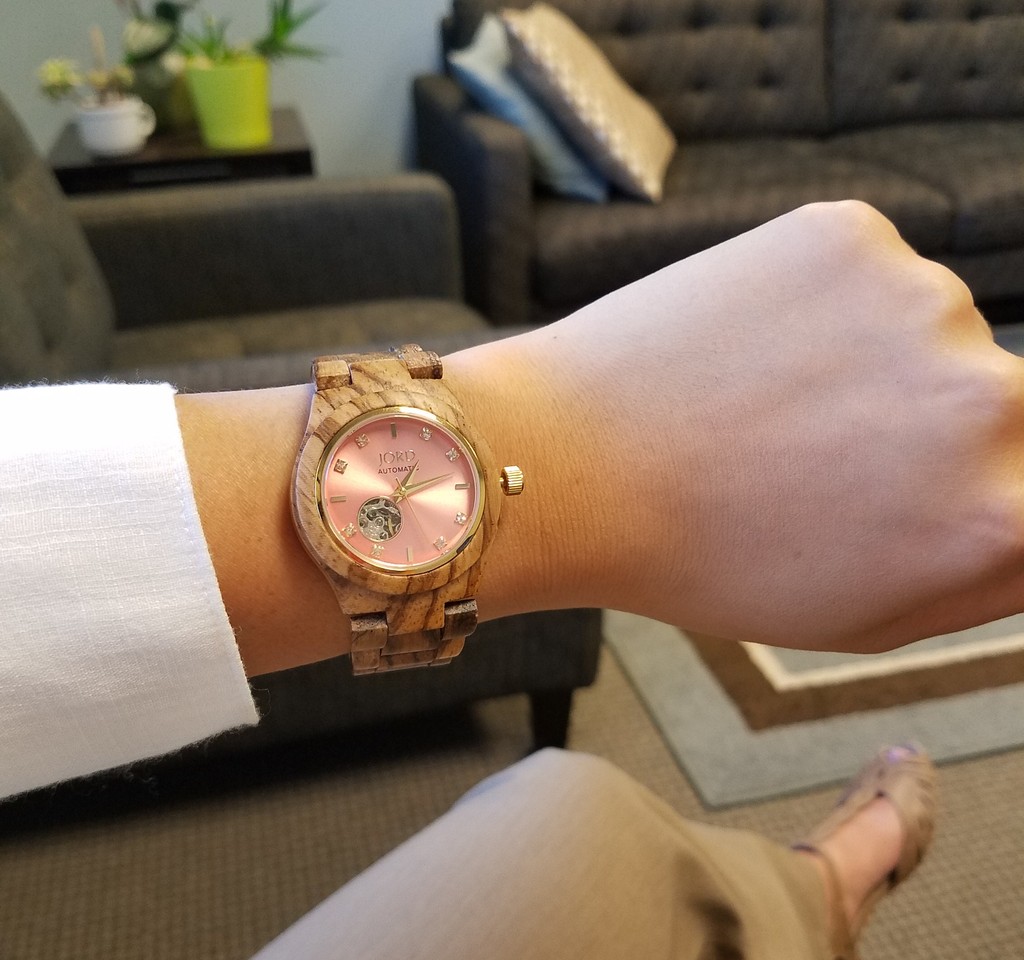Advocating for our health can be difficult, especially when it comes to advocating for our mental health. I know what it’s like to feel overwhelmed with information and afraid to ask questions at various appointments where we rely on the expertise of professionals, and sometimes I see the same confused looks on my patients’ faces, which is why I always ask if they have questions. I often praise my patients for advocating for themselves in their treatment because I know it’s not easy, which is why I wanted to share my tips on ways you can take charge of your own mental health & wellbeing when meeting with your doctor and other healthcare professionals. From coming prepared with a list of questions to bringing along a family member, my tips may ease your anxiety the next time you have a mental health concern you wish to share with your doctor. Check out my five tips for advocating for your mental health here on Healthline!
doctor
(SEE VIDEO BELOW)
Not many people talk about being in therapy, but as a psychiatrist, it’s my goal to break the stigma of seeing a therapist because it can be an amazing source of support. In this quick video, I talk about my therapy journey and how it has helped me grow into the person and physician that I am today.
Note: I originally created this video for my IGTV on my Instagram (@freudandfashion), so I apologize for the quality! Let me know your own thoughts about psychotherapy in the comments below! Thanks for watching.
{Coachella in Indio, California}
I’ve been to my fair share of music festivals and several of my patients feel comfortable enough to tell me when they’re attending festivals as well. As fun as music festivals can be, they can also be exhausting, so some may return home feeling physically ill (I admit that I caught the flu after Coachella this year). And though strict policies exist regarding illicit drugs, they still make their way on to festival grounds, and some may experience longer lasting neuropsychiatric symptoms as a result of substance use during these events.
Since we’re in the midst of summer music festival season, the following are my tips on surviving music festivals with your health (and mind) as intact as possible:
Prioritize Sleep & Rest. Music festivals are like a marathon (the typical music festival occurs over one weekend, from Friday to Sunday), so conserve your energy and plan for breaks and naps when needed. You’ll likely return to your accommodations (camp, hotel, house, etc) pretty late (or super early in the morning), so make sure you get enough rest before heading back to the festival grounds. More power to you if your goal is to party all day & night, but chances are you won’t have the energy to make it through the entire festival.
Stay Connected. Most people travel in groups, so minimize the stress of losing track of each other by doing the following:
- Set up a group chat (use apps, such as WhatsApp or Facebook Messenger, since cell phone reception might be spotty).
- Time stamp your text messages — there’s nothing worse than receiving a delayed text (and not knowing it was delayed because there was no time stamp!).
- Set a meeting place as a designated spot if you and your crew can’t find each other.
Know where the medical tent is. I know several colleagues who have worked at medical tents for Coachella and they’ve seen it all — from dehydration to intoxication. Each music festival should have a medical staff stationed there, so even if you don’t know where they’re located, at least know that medical services are available if needed.
Stay hydrated. With high temps during the summer combined with a lot of dancing, walking, and possible use of alcohol or drugs that may exacerbate dehydration, it’s important to make sure that you have plenty of water on hand.
Use your best judgment when it comes to drugs and alcohol. Medically, I’d like to say “don’t drink or use drugs,” but the advice of “just say no” has long been proven to be ineffective. And also, I don’t live under a rock — I know that illicit drugs get used at these festivals. So, what I will offer here is my hope that you will use your best judgment, in addition to considering the risk of long-term neuropsychiatric effects that may occur from use of certain substances, especially the commonly used MDMA (ecstasy, Molly, etc). Due to the massive serotonin release of this drug, tolerance develops quickly, and prolonged use can lead to permanent damage to serotonergic mechanisms in the brain. I’ve treated patients with panic attacks, generalized anxiety, depression, memory impairment, insomnia, and other sequelae that have persisted even after stopping use of this drug.
What to pack. Don’t be fooled by social media and assume that everyone dresses in picture perfect outfits and walks around in heels during these festivals (I made this mistake and wore heels to my first festival — worst mistake ever). Comfort should be a priority when it comes to deciding what to wear and what to bring. Aside from clothing, here’s a list of other important items to consider packing:
- Comfy shoes
- Hat
- Sunblock
- Portal phone charger
- Bandana (to cover face in dusty environments since most festivals are in fields)
- Long sleeve or light sweater/jacket when it gets colder at night
And last, but not least — my last tip is to let go of any pressures you have to undergo the ‘perfect’ experience because that mentality just adds unnecessary stress. In my experience, once I let go of trying to look ‘picture perfect’ (not every outfit has to be Instagram-worthy) and do ‘everything’ during the festival, I was able to focus on being present, enjoying the music, and having a fun & memorable time.

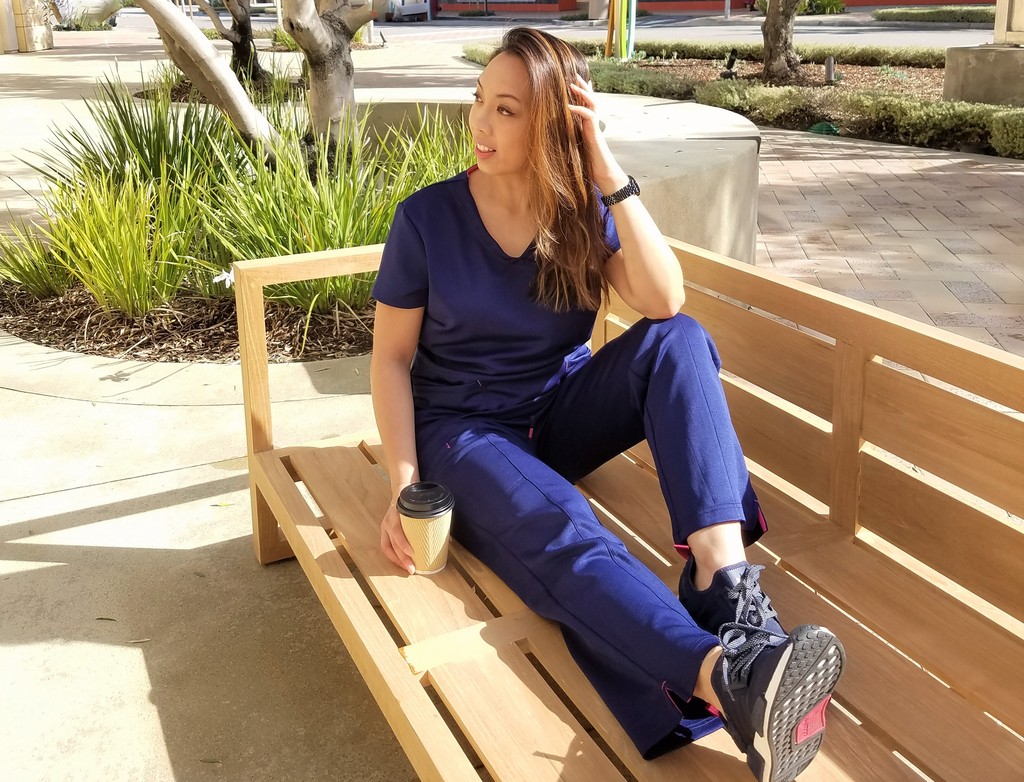
{Smitten Bliss Scrubs c/o Smitten Scrubs via Scrub Shopper}
The last time that I wore a pair of scrubs was several years ago as an intern physician doing internal medicine. And they were the standard pale blue hospital scrubs that you practically live in as an intern rotating through the hospital wards as part of the internal medicine, family medicine, general surgery, emergency medicine, and ob/gyn teams. I recall running up and down the hospital stairs in them, zipping through the emergency medicine floor in them, and getting various bodily fluids splattered onto them despite my best obsessive-compulsive attempts to keep them clean. Then, the routine was to fall asleep on the couch in my scrubs within seconds upon returning home from a 30-hour shift. Hence, scrubs have provided me with memories both exhausting and accomplishing.
As a psychiatrist, I no longer wear scrubs, though I miss the ease of getting up in the morning without having to dedicate minutes contemplating what to wear to work. Therefore, when Scrub Shopper reached out to me to promote the relaunch of one of their brand lines, Smitten Bliss, I was excited to wear and experience the new generation of scrub designs and styles.
The following is my opinion regarding the Smitten Bliss line scrubs that I received:
- Warmth – I was out running errands on a cold, chilly, yet crisp day in so-cal. These scrubs kept me pretty warm and I was able to wear them without having to wear layers underneath nor a jacket over it.
- Comfort – the scrubs are made with polyester & spandex and provide enough stretch to allow ease of movement.
- Style – these scrubs are far more stylish than the standard hospital scrubs! The material is of high quality. They come in a variety of colors (berry, heather grey, royal blue). The ones I’m wearing are in navy. I also love the pink trim, which adds a pop of color.
- Sizing – I love that the pants come in petite sizes (which is perfect since I’m 5’2”). The top in size small was slightly longer in length than I prefer, but I’m sure would be perfect for those taller than me.
- Functionality – The pants and top have several pockets, which are much needed while on the job.

And what I really like about Scrub Shopper is their Give Back campaign in which Scrub Shopper offers donations to Susan G Komen, Doctors Without Borders, St. Jude’s, the Abandoned Pet Project, and the Greta James Scholarship Foundation. Customers will have the option at checkout to choose one of those options, and they will donate $1 per order to the organization of their choice.
And as an added bonus, Scrub Shopper and I have collaborated to host a GIVEAWAY for one of my followers on Instagram to receive a free pair of Smitten Bliss scrubs! Check out my link here for simple rules on how to participate!
Do you wear scrubs to work?? And if so, what is the most important factor about the type of scrubs you choose (cost, style, pockets, color, etc)??
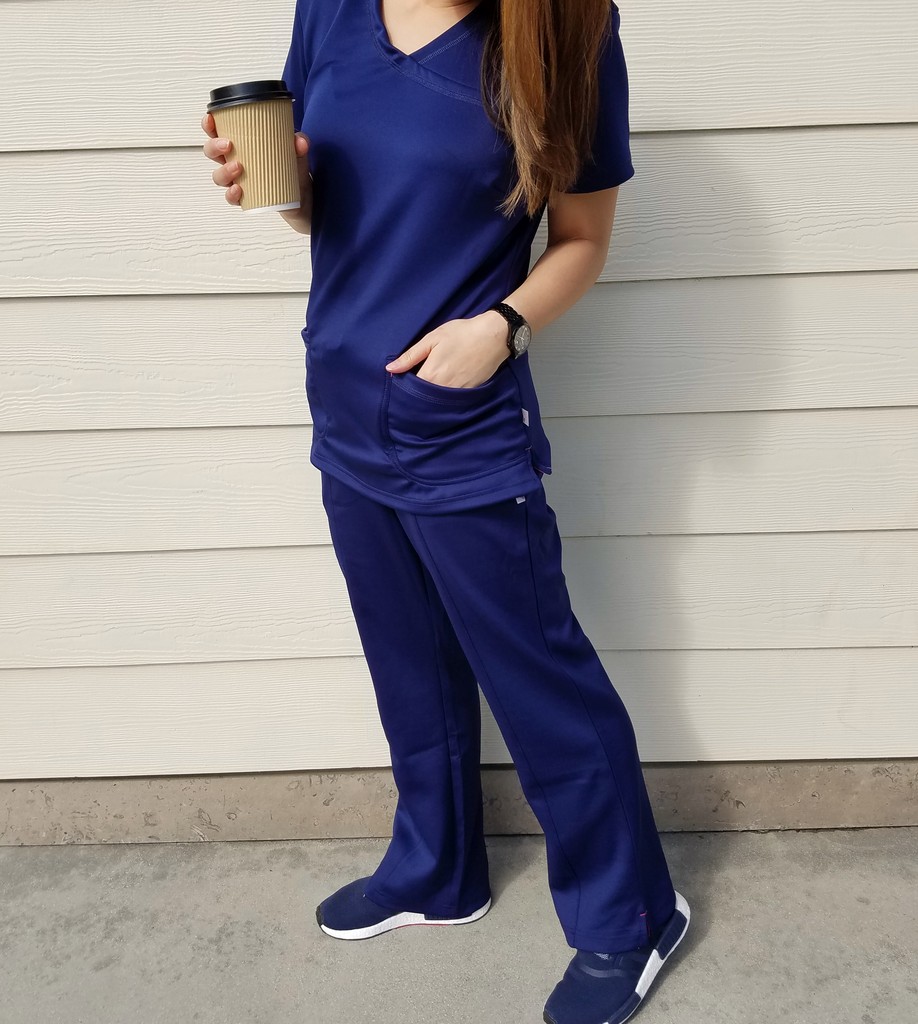
As a psychiatrist, time dictates my day in the office. My schedule is divided into 20-minute increments for patient follow-up visits and 40-minute blocks for new patient evaluations. I try my best to stay within the specific time limits, but sometimes patients require a bit more time in order to effectively convey & discuss the diagnosis and treatment plan. If a few minutes overtime are needed, I allow it, however, it’s also necessary for a psychiatrist to set boundaries on time because it can take away from each successive patient’s appointment time. Even though some patients may take up more time than allowed, it’s my job as a psychiatrist to direct the interview and complete the entire session within a reasonable timeframe.
Sometimes patients are so anxious about disclosing information that they wait until the last minute when the session is almost over. A psychiatrist should acknowledge the patient’s disclosure and triage/judge whether or not the issue is emergent and must be addressed, or if the issue can wait until the next appointment. I’ve had to remain in the office after hours several times, mostly when a patient is an imminent risk and needs to be assessed for possible hospitalization.
If you don’t feel like you get enough time with your doctor, then you’re not alone. Most doctors wish they could spend more time with their patients, but the pressures to see a patient within a short amount of time exists. Over the past four years that I’ve been in practice, I’ve developed my own therapeutic style that allows me to to efficiently ask necessary questions while maintaining a connection with my patients (hint: such techniques involve direct eye contact, spending the first few minutes allowing the patient to talk uninterrupted, acknowledging factors in their lives other than solely discussing meds, etc). In a 20-minute session, I probably average spending 25% of the time discussing medications. A psychiatrist’s job isn’t easy — I may be a physician, but I’m also a human being and can’t help but be impacted by my patient’s heartbreaking issues. Therefore, prioritizing time for self-care is absolutely necessary.
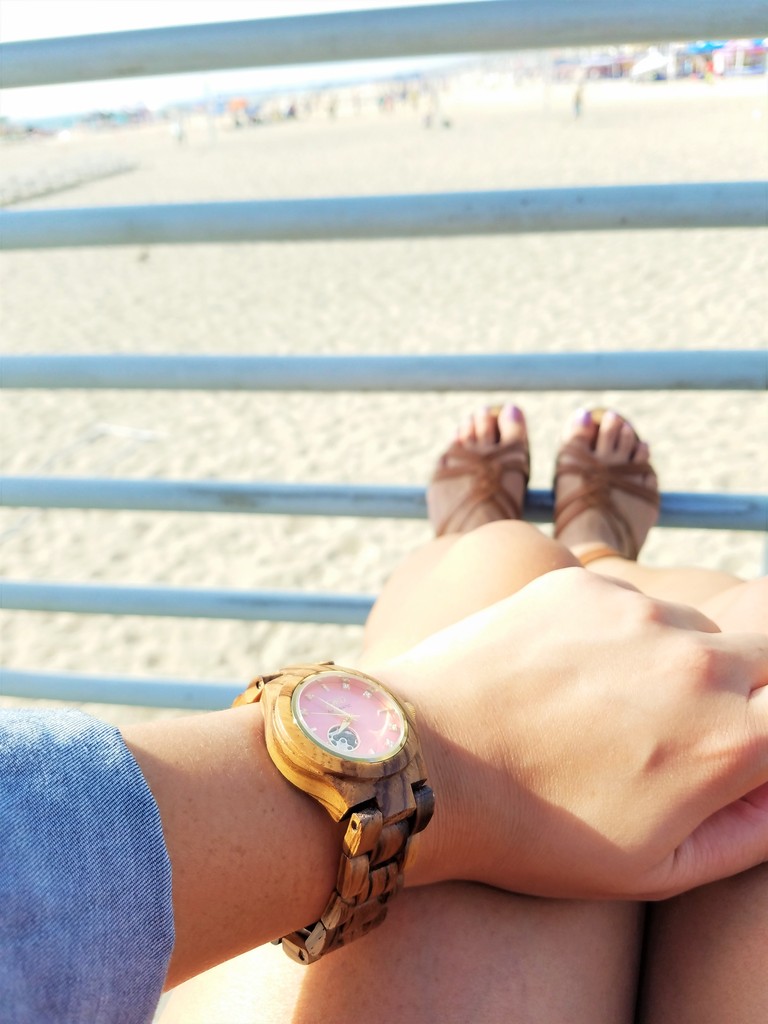
I utilize my weekends doing non-psychiatry activities (with the exception of blogging & social media). I used to be on-call at my previous job, but realized I needed weekends off to maintain my sanity. I admire anybody who takes call on weekends, but for me there was nothing worse than getting paged at 2 am and driving to the hospital half asleep.

Having made career decisions that doesn’t compromise on providing the best quality of care I can nor the people and activities that are important to me, I feel much more balanced with my current part-time schedule. I used to feel extremely constrained by time (I still feel that way, but not nearly as much), but these days I am far more in control of how I choose to spend it.
Watch: c/o JORD (For the link to my watch, click here)
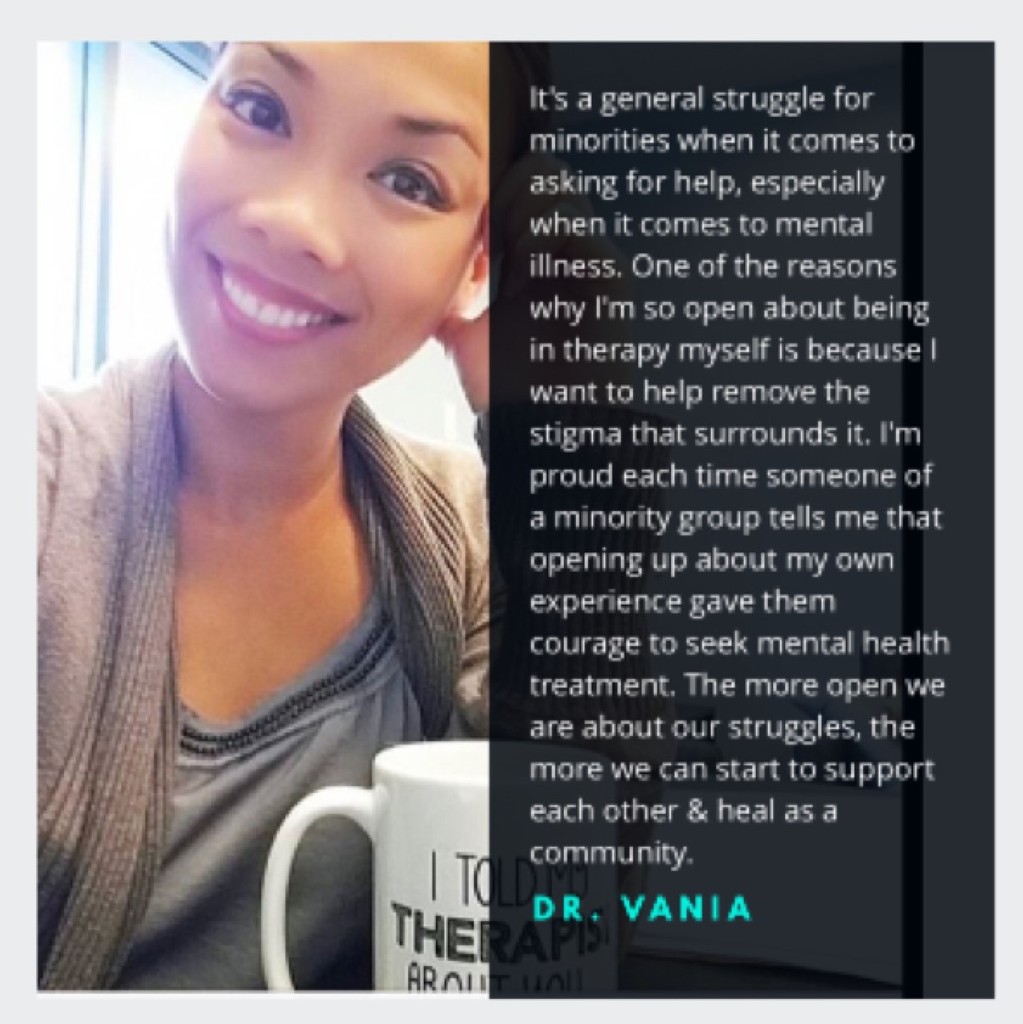
As a psychiatrist who is also in therapy, I remember feeling misunderstood when it came to my culture as a filipino-american, but meant a lot to me to have my therapist express a genuine interest in understanding my culture and asking me for details regarding my experience. Oftentimes I believe clinicians don’t prioritize someone’s identity (ethnicity, culture, religion, sexuality) when it comes to health, especially mental health, yet these factors play a significant role in someone’s values and way of life.
July is Minority Mental Health Awareness Month and although today might be the last day, having knowledge of the disparities and struggles that several minorities experience is important if we’re going to eliminate stigma surrounding mental illness. I consider myself as someone who prioritizes cultural competency, yet reading statistics and information regarding certain minorities surprised me and I was happy that this month existed and motivated me to read more about it. Which is the reason why I’m sharing some of the following information with you here on my blog, in addition to some techniques that I use to incorporate someone’s ethnicity/culture/sexual identity, etc into the conversation during treatment (continue reading below).
Statistics:
- African American attitudes toward mental illness are another barrier to seeking mental health care. Mental illness retains considerable stigma, and seeking treatment is not always encouraged. One study found that the proportion of African Americans who feared mental health treatment was 2.5 times greater than the proportion of whites (Sussman et al., 1987). (1)
- A report from the U.S. Surgeon General found that violent deaths – unintentional injuries, homicide, and suicide – account for 75% of all mortality in the second decade of life for American Indian/Alaska Natives (U.S. Dept of Health & Human Services Office of Minority Health)
- Southeast Asian refugees are at risk for post-traumatic stress disorder (PTSD) associated with trauma experienced before and after immigration to the U.S. One study found that 70% of Southeast Asian refugees receiving mental health care were diagnosed with PTSD (U.S. Dept of Health & Human Services Office of Minority Health)
- Western culture makes a distinction between the mind and body, but many Asian cultures do not (Lin, 1996). Therefore, it has long been hypothesized that Asians express more somatic symptoms of distress than white Americans (1).
- Mexican immigrants who lived fewer than 13 years in the United States, or Puerto Ricans who resided on the island of Puerto Rico had lower prevalence rates of depression and other disorders than did Mexican Americans who were born in the United States, Mexican immigrants who lived in the United States 13 years or more, or Puerto Ricans who lived on the mainland. This consistent pattern of findings across independent investigators, different sites, and two Latino subgroups (Mexican Americans and Puerto Ricans) suggests that factors associated with living in the United States are related to an increased risk of mental disorders (1).
The following are a few questions I ask to promote discussion of someone’s identity and incorporate someone’s culture, race, ethnicity into treatment (some of these may sound so simple, yet raising the questions can feel awkward at first especially since the subject of someone’s identity might be perceived as a sensitive subject):
- What is your ethnic background?
- For someone who is mixed race: Is there a specific ethnicity/culture/race that you identify with most?
- What is your sexual identity?
- How has your cultural identity influenced the way you approach current issues in your life?
- How does your family cope with issues related to mental health?
- Tell me what are some of the most misunderstood aspects about your culture that you wish people could better understand?
If you’ve had any positive/negative experiences with clinicians in regards to addressing your health/mental health, please share and comment below!
Source:

{Westlake Village, California}
Though my social media name has the word “fashion,” my fashion sense during the initial stages of my professional career most definitely did not reflect any sense of the word. During college, I apparently believed that it was appropriate to wear flip flops, cut off jeans, and a hooded sweatshirt as both a research associate/front desk clerk for the research center I worked for. Even the more junior researchers wore slacks and pencil skirts, but I’m not sure why I didn’t put two and two together. I vaguely recall the manager asking if I could possibly dress more conservative, but gave her the excuse that driving directly from class to work allotted minimal time for me to change clothing, therefore I promised to at least change my shoes. I honestly thought that I was a rockstar for upgrading my flip flops to the more conservative tennis shoes, but apparently even that wasn’t good enough. And if that wasn’t enough to get me to change, imagine how I responded when I overheard several of my more senior coworkers having a rather loud conversation within earshot discussing the importance of ‘implementing’ a dress code. And yet, I still didn’t realize their words were directed towards me! It wasn’t until my research supervisor had a one-to-one conversation with me that I finally got the message about my wardrobe. He kindly informed me that the center would like for me to not only dress more conservative, but to also dress more professional. He emphasized the fact that since I worked at the front desk, I also served as a representative of the center, and therefore it was important for me to dress professional. To be honest, I was shocked throughout the entire conversation and thought “why didn’t they just tell this to my face sooner?”
The moral of the story is an important note about communication. Oftentimes, we indirectly communicate our thoughts and assume that the person we’re communicating with should understand/comprehend exactly what we’re saying, but that’s not always the case. I talked to one of my patients today about the importance of directly communicating how she feels about her teenage daughter on a deeper level rather than engaging in their usual angry conversations with one another (anger tends to be a secondary manifestation of deeper emotions such as hurt and pain). I truly appreciated my supervisor for having such an honest conversation with me. To this day, I still think about the conversation almost each time I contemplate what to wear to work. Needless to say, that was a pivotal moment in my style transformation and marked the beginning of me discovering and cultivating my own personal and professional wardrobe (yes, I no longer wear cut-off jeans to work).
Photo by Alex M & Jen F

{Malibu, California}
This may be my quickest blogpost to date, which is uncharacteristic of me because I’m such a perfectionist when it comes to writing. But I wanted to give a personal update since I haven’t posted about my life in recent weeks on here. Looking back at my posts from 2015, I recognize how much I’ve grown and changed my lifestyle and career to prioritize myself and what’s important for me, my family, friends, and patients. I recall writing this post last year on my desire to explore new places and live freely after all my restrictive years in medical training, and must say that I’ve lived up to my words in 2016!
The pic above was taken recently during the Malibu Wine Safari tour as part of my birthday celebration last month (thanks to my brother for the birthday gift!) and today I’m taking off for a last minute, spontaneous international trip to a country I’m super excited to visit, but honestly wasn’t prepared for since this California girl isn’t used to the rapidly changing and varied climate of this country (hint: the name of the country sounds very cold and is an island). Hence, the quick blogpost today since I need to go finish packing before my flight leaves in a few hours!
If you’d like to follow along on my adventures, be sure to follow me on my Snapchat (@freudandfashion)!! PS: in addition to my daily adventures, I also post educational material on mental health and show my humorous side via parodies about shrinks.
Photo by Alex Manipod

Why I created this series:
Every psychiatrist has their own style, but I’ve always been interested in asking patients more open-ended questions if I think it will provide me with a greater understanding of who they are as unique individuals. Unfortunately, I believe that the art of psychiatry has dwindled down to a checklist which subsequently churns out a diagnosis and treatment plan based on the minimum criteria needed to properly meet billing requirements. Such a practice may lead to a lack of connection in the therapeutic relationship, therefore, I sought to create a series that explores the unspoken thoughts that a person may have when meeting with a psychiatrist. If you would like to contribute to future questions in this series, please email me at freudandfashion@gmail.com or add me on Snapchat (freudandfashion).
QUESTION OF THE WEEK:
How do you think medical doctors treat patients with mental illness differently than those without mental illness?
RESPONSES:
I didn’t really notice much of a difference in the way medical doctors treated me with a mental illness, until I had to get surgery on my wrist. My surgeon went on extensively that I was at a higher risk for abusing the pain medication post surgery. I had to go to lengths to prove to him that I would be able to minimize this risk, and wean myself off the pain medication as soon as possible. After this experience, I wondered if a patient without mental illness would have gone through as much scrutiny.
~ Logan, pre-med student
_________________
Doctors treat patients with mental illness differently than those without a mental illness. From experience, doctors treat people with mental illness like they are stupid, incompetent, and incapable of doing anything for themselves. They get treated with less respect as well.
~ Allyson, student
__________________
It depends on how much the doctors actually know about mental illnesses. The majority, unfortunately somehow equate people with mental illnesses as mentally challenged individuals. Most doctors know, before they even meet you, that you have a mental illness due to the fact that the doctors generally see what kind of medications you are currently on prior to walking into the examination room.
I literally have had some very rude doctors that would be new to me and upon opening the door, they don’t say hello…my name is…or anything. They will have their nose in the charts or x-rays and then don’t look you in the eye and tell you what they recommend and then just walk out. It really pisses me off when they act so arrogantly. I generally never do return back to see a doctor who treats me like that. Then there are those that seem a bit nervous about meeting me; however, once I start talking like the college-educated woman that I am, they seem impressed and/or astonished that a person with a mental illness could have such insight.
So it angers me and depresses me that most doctors will tag a “stupid idiot” label on someone who is taking psychotrophic medications or acts as though nothing I say is true for I might be having delusions…yet, with each new doctor I encounter, I hope to go away feeling satisfied that I for one don’t meet the stereotype that our society has created for people with mental illnesses.
~ Anonymous
_____________________
My family medicine doc never follows up on anything, ever. I have to remind them of everything so if I don’t bring it up, it never gets addressed. And when I try to bring it up, they look at me like I’m crazy. I guess it’s a good thing that I’m smart, knowledgeable and know a lot, but I can’t imagine what it must be like for people who don’t know anything. I just finished reading Black Men, White Coats and that book is really honest. I see it happen all of the time. I think patients are disregarded in all aspects and I think with African Americans, they treat us differently when it comes to mental health. But i don’t want to pull the race card, this is my perception of what i see.
~ Sherita, pre-med student
_____________________
Personally, sometimes I think some people don’t consider mental health as important as physical health. Maybe that’s why some doctors do not pay attention to this point.
~ Anonymous, student
_____________________
If you have any thoughts or experiences pertaining to the question, please comment below!
Latino Medical Student Association National Conference 2016
I realize it has been a few weeks since my last blogpost and the reason is because I have been even busier since receiving wonderful opportunities to speak at conferences. Blogging and being active on social media has provided an amazing outlet to share my views on mental health, yet speaking at conferences would also be a great way to directly connect with our future doctors and health care professionals. I’m pretty open on my blog about my previous struggles with social anxiety, so although public speaking can be challenging and highly anxiety-provoking, it has been one of my best methods for overcoming my anxiety.
The video above is a quick edit of my participation as a speaker for the Latino Medical Student Association’s National Conference, which was held at my medical school, Western University of Health Sciences College of Osteopathic Medicine of the Pacific. I hosted a workshop on ‘medical student burnout’ and was also a panelist for the Women In Medicine panel. Speaking at my medical school was a reminder of how I’ve come full circle as a former struggling medical student and returning as a physician sharing my knowledge and experiences!
Video by Marlon Santos


